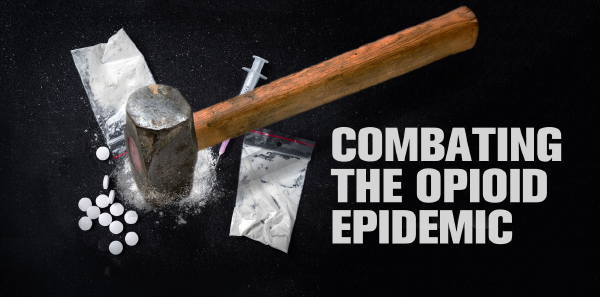
Editor’s Note: This is the seventh part of an ongoing series on what emergency physicians can do to combat the opioid epidemic.
Explore This Issue
ACEP Now: Vol 38 – No 03 – March 2019The opioid epidemic initially revolved around abuse of prescription opioids. Since then, the epidemic has evolved, with the majority of deaths now associated with fentanyl and other synthetic opioids. Still, the majority of people initiate opioid use with prescription opioids before switching to illicit, and potentially more dangerous, drugs.1 As such, physician prescribing habits continue to be scrutinized. Not only is this evident from articles in the lay press but also with guidelines such as those from the Centers for Disease Control and Prevention (CDC) or hospital organizations.2,3 In some situations, laws were even passed governing prescribing practices. For instance, in Missouri, a seven-day prescribing limit for acute pain was passed during the latest legislative session.4
This scrutiny has led to considerable debate regarding emergency physicians’ prescribing practices and their association with long-term opioid use—and potentially abuse. The easy answer is to keep patients opioid naive when possible. After all, you can’t get addicted if you’re never exposed. Resources are available to help emergency physicians appropriately manage pain in situations where they should avoid opioids. The ACEP Pain Management and Addiction Medicine Section has developed the Managing Acute Pain (MAP) bedside tool (acep.org/map) that can be used in real time.
Of course, there are still times when an emergency physician will need to prescribe an opioid. While scoring systems such as the Opioid Risk Tool (ORT) are readily available on your smartphone and easy to use, they are limited. Sure, a high score should probably make you think twice, but a low score doesn’t eliminate the chance of developing a substance use disorder; this is the crux of the problem. Even though the rate of developing an opioid use disorder is low, we simply don’t know who is going to be fine and who will start down the deadly and destructive path toward addiction.
This is exemplified by the current U.S. Surgeon General, Jerome Adams, MD, MPH. Dr. Adams is an incredibly accomplished physician and public health official. Yet his brother, with similar genetics and raised in similar circumstances, is serving time in federal prison for drug-related crimes due to his substance use disorder.5
How Dangerous Are Prescriptions?
What evidence is there that a prescription from the emergency department is going to lead patients down this path? It’s an important question. The emergency department certainly can’t be the source for the majority of prescriptions when compared to internists, family medicine physicians, and pain physicians. However, this doesn’t mean we don’t need to prescribe responsibly. A study published in the New England Journal of Medicine in 2017 investigated this by reviewing claims data from a national sample of Medicare patients.6 The authors explored individual prescribing practices among emergency physicians in the same practice to determine if their prescribing was associated with long-term opioid use over the next year. Emergency physicians were separated into “high-intensity” and “low-intensity” prescribers based on the total number of prescriptions and total number of pills prescribed.
The authors found the high-intensity group was 3.3 times more likely to prescribe opioids than the low-intensity group (7.3 percent versus 24.1 percent, P<0.001). Shockingly, this corresponded to a number needed to harm of 49. Or, to put another way, for every 49 prescriptions written, one resulted in long-term use.
There were multiple and significant limitations that have been discussed elsewhere—most important, long-term use does not equal addiction and the prescriptions themselves were not necessarily inappropriate.7 Still, this study is not unique in associating new prescriptions in opioid-naive patients with long-term use and is not the only ED-based study to do so.8-10 A similar study from the CDC also concluded that the probability of long-term use increased starting on day three of the prescription.11 This was also a review of opioid-naive patients in a large claims database and has many of the same limitations as the New England Journal of Medicine study. Other non-ED-based studies also demonstrate long term persistence of between 5 and 10 percent following an initial prescription.12,13 Once again, long term use does not equal addiction. However, even factoring in their limitations, these findings are important.
Pages: 1 2 3 | Single Page





One Response to “Reduce Opioid Duration and Quantity to Limit Use, Avoid Addiction”
April 7, 2019
Tim Laseter D.O.At what point does patient responsibility for their actions come into play – these articles never seem to address this